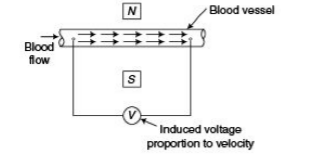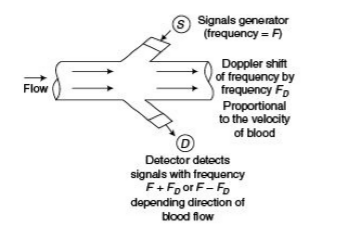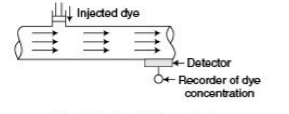Introduction
Blood flow can easily be measured by using biomedical instruments. These biomedical instruments are based on several working principles namely:
- Electromagnetic Induction
- Ultrasound Reflection
- Radiography
- Dye Dilution
- Chamber Plethysmography
The magnetic and ultrasound blood flow meters actually measure the velocity of the blood stream. A transducer is used that envelope an excised blood vessel to measure the mean velocity of the blood stream. The flow of the blood can be worked out from the measured velocity.
Let’s look at the types of blood flow meters based on their different working principles:
Magnetic Blood Flow meter
When an electric conductor is moved in a magnetic field, then a voltage is induced in the conductor which is proportional to the velocity of its motion. Same principle is applicable if conducting fluid is used instead of the conductor. A permanent magnet is positioned around the blood vessel. The blood flow generates a voltage which is proportional to its velocity as shown in the diagram below:

Ultrasonic Blood Flow meter
In an ultrasonic blood flow meter, a beam of ultrasonic energy is used to measure the velocity of the blood flow. A pulse beam is directed through a blood vessel and transit time to reach a detector is measured. The transit time is shortened if the blood flow is in the same direction as that of the pulsed beam otherwise transit time is lengthened.
The velocity of measurement can also be ascertained using the Doppler shift of the frequency of the pulsed beam due the blood flow is shown in the figure below:
Find out more about: Fingertip Pulse Oximeter Blood Oxygen Saturation Monitor

The Doppler shift (FD) of frequency is proportional to the velocity of the blood in the vessel.
This method measures flow instead of the blood velocity. The dye is injected at a constant rate in the blood flow and a detector measures the dye concentration downstream as shown in the diagram below:

The concentration of dye in the blood stream keeps on increasing as time elapses and finally reaches a constant value.

Radiographic Flow meter
In this method, blood is made visible by X-rays by the contrast medium and the movement of the blood can be viewed on a sequential record of X-ray images, the blood flow can be estimated.
Plethysmography Chamber Flow meter
In this method, the venous occlusion cuff is inflated to stop return from the veins of the forearm. However, arterial blood flow in the forearm persists and it causes the volume increase of the forearm. The pressure increases in the chamber which can be measured by a pressure transducer. The flow of the blood is proportional to the change in the pressure in the chamber.

You can also read: Why Patient Monitoring Instruments are Important in Medical Care

Leave a Reply
You must be logged in to post a comment.